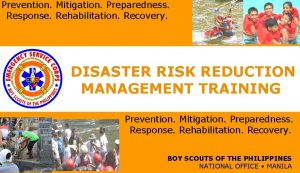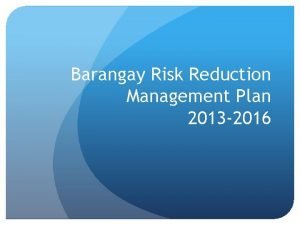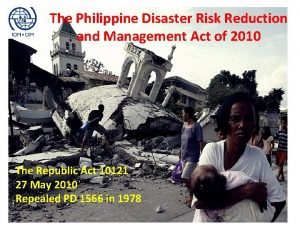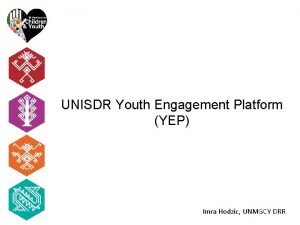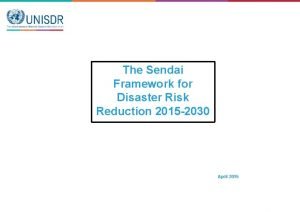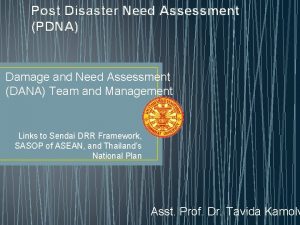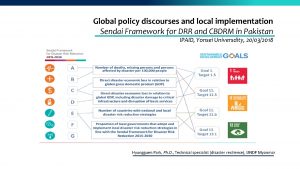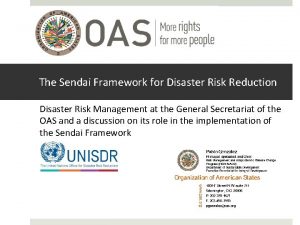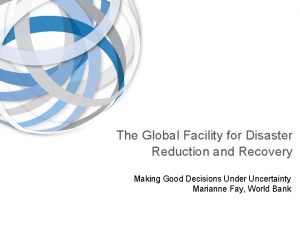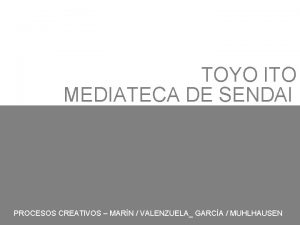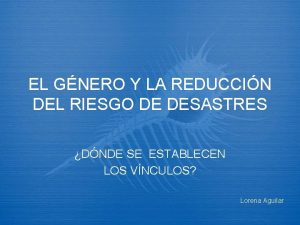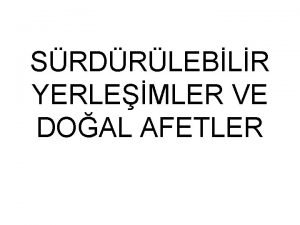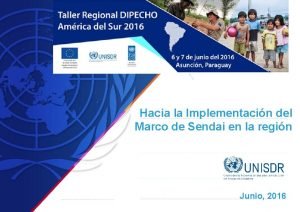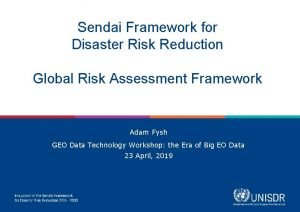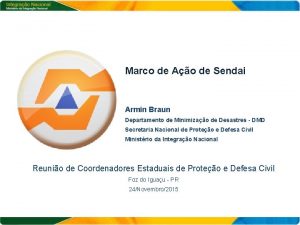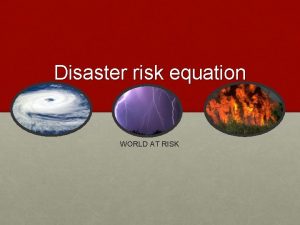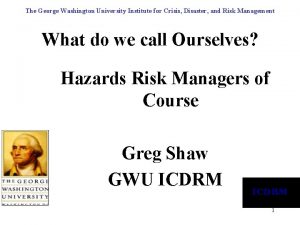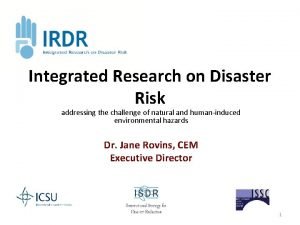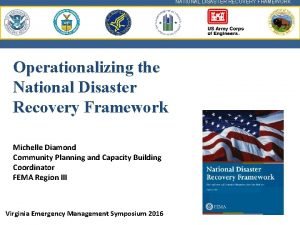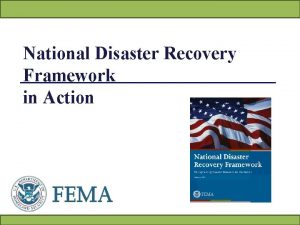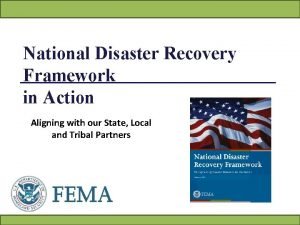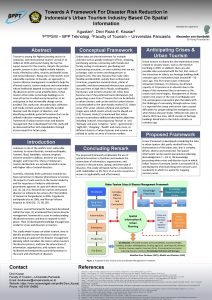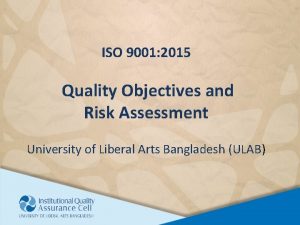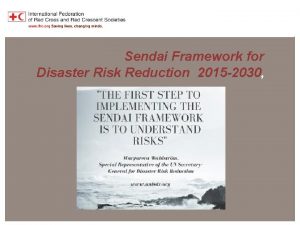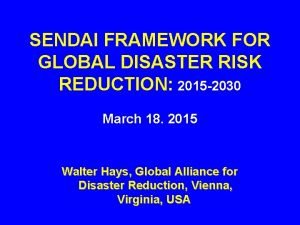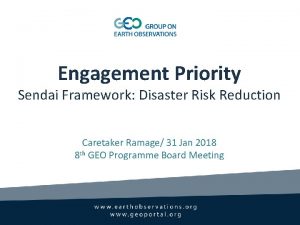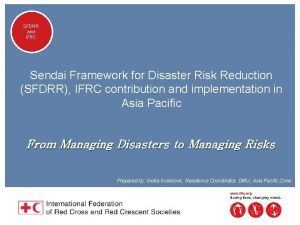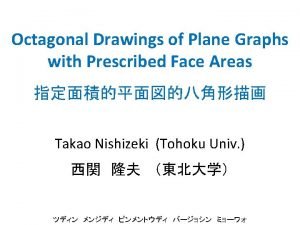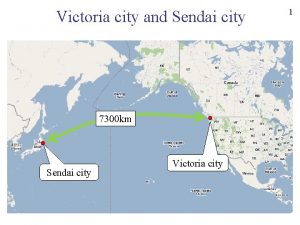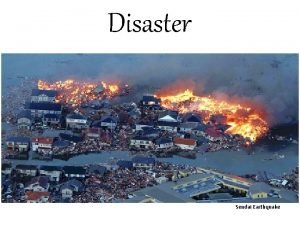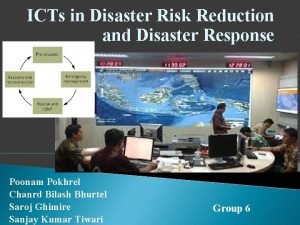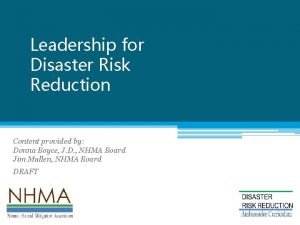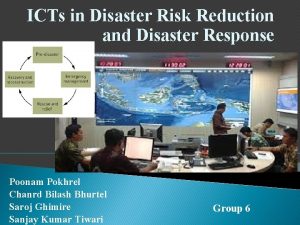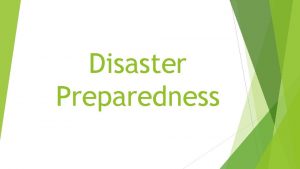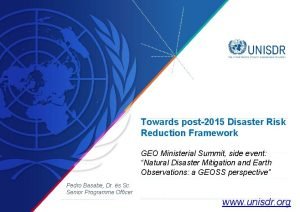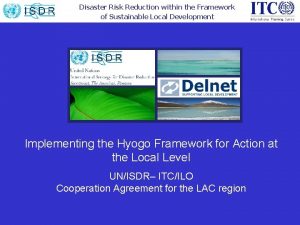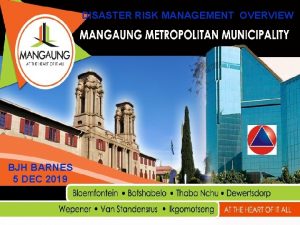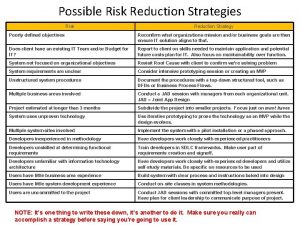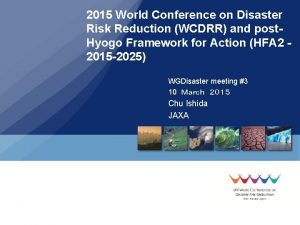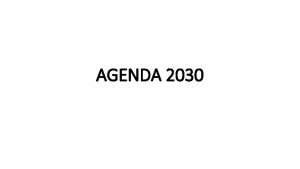Sendai Framework for Disaster Risk Reduction 2015 2030
























- Slides: 24

Sendai Framework for Disaster Risk Reduction 2015 -2030

LEARNING OUTCOMES After this lesson you will: • Understand what the UN Sendai Framework for Disaster Risk Reduction is, how it came to be and how it can be implemented in the BSR. • Know how Sendai Framework is connected to Agenda 2030 and the Paris Agreement. • Be able to raise awareness of the UN Sendai Framework for Disaster Risk Reduction and its implementation in the BSR.

COMMONLY USED ABBREVIATIONS BSR - Baltic Sea Region CCA - Climate Change Adaptation DRR - Disaster Risk Reduction SDG - Sustainable Development Goals SFDRR 2015 -2030 - Sendai Framework for Disaster Risk Reduction 2015 -2030

WHAT IS THE SENDAI FRAMEWORK? 1/2 • Sendai Framework was adopted March 2015 to reduce the number and consequences of disasters. • Successor instrument to the Hyogo Framework for Action (HFA) 2005 -2015: Building the Resilience of Nations and Communities to Disasters • 15 -year, voluntary, non-binding agreement, with seven targets and four priorities for action. • Emphasis on disaster risk management instead of disaster management

WHAT IS THE SENDAI FRAMEWORK? 2/2 Reduction of disaster risk as an expected outcome, preventing new risk, reducing existing risk and strengthening resilience • Improved understanding of disaster risk • Strengthening of disaster risk governance • Preparedness to “Build Back Better” • Recognition of stakeholders and their roles • Resilience of health infrastructure, cultural heritage and work-places • Strengthening of international cooperation and global partnership

AGENDA 2030 AND PARIS AGREEMENT - SENDAI FRAMEWORK • Agenda 2030 adopted by world leaders in September 2015 • Connected to Agenda 2030 for example through o Goal 9 about building resilient infrastructure o Goal 11 that focuses on sustainable and safe cities: o Goal 13 about climate change adaptation. 1/3

AGENDA 2030 AND PARIS AGREEMENT - SENDAI FRAMEWORK • Climate Agreement is an aid in implementing the Sendai Framework. EU countries have a national climate adaptation strategy. • The Sendai Framework mentions climate change risks: Introduction, Chapter 1 lessons learned, Guiding principles, priorities 1, 2, and 4. 2/3

AGENDA 2030 AND PARIS AGREEMENT SENDAI FRAMEWORK 3/3 UNDRR 2017

GOALS, PRIORITIES, ACTIONS Global Targets (7) What we should achieve. Priorities (4) What we should focus on to achieve the global targets. Recommended Actions (59) Suggested actions that should help us reach the global targets. Indicators (38) How we measure our success in reaching the global goals.

THE 7 GLOBAL TARGETS 1/2 A: Reduce disaster mortality. B: Reduce the number of affected people. C: Reduce direct disaster economic loss in relation to global gross domestic product (GDP) by 2030. D: Reduce disaster damage to critical infrastructure and disruption of basic services (health and educational facilities.

THE 7 GLOBAL TARGETS 2/2 E: Increase number of countries with national and local DRR strategies. F: Enhance international cooperation and support to developing countries. G: Increase the availability of and access to multi-hazard early warning systems and disaster risk information and assessments to the people.

THE 4 PRIORITIES Priority 1: Understanding disaster risk. Priority 2: Strengthening disaster risk governance to manage disaster risk. Priority 3: Investing in disaster risk reduction for resilience. Priority 4: Enhancing disaster preparedness for effective response and to “Build Back Better” in recovery, rehabilitation and reconstruction.

WHAT IS PREVENTION? Activities and measures to avoid existing and new disaster risks. Prevention measures can also be taken during or after a hazardous event. WHAT IS MITIGATION? Mitigate To lessen or minimize the adverse impacts of a hazardous event.

WHAT IS PREPAREDNESS? The knowledge and capacities developed by governments, response and recovery organizations, communities and individuals to effectively anticipate, respond to and recover from the impacts of likely, imminent or current disasters. WHAT IS EARLY WARNING SYSTEM? An integrated system of hazard monitoring, forecasting and prediction, disaster risk assessment, communication and preparedness activities systems and processes.

TYPES OF HAZARDS • • • Natural Anthropogenic Social-natural Multi-hazard Biological Environmental Geological or geopysical Hydro-meteorogical Technological

TYPES OF DISASTERS IN THE SENDAI FRAMEWORK • Small-scale • Large-scale • Frequent • Infrequent • Slow-onset • Sudden-onset

SENDAI EXAMPLES OF MEASURES FOR RISK ASSESSMENTS 1/2 Prio 1 Understanding disaster risk: Measure 24 (i) risk assessments based on tradition, indigenous, local, and scientific knowledge Prio 3 Investing in DRR för resilience: Measure 30 (f) promote risk assessments into land-use policy development and implementation, urban planning etc. Anticipate environmental change.

SENDAI EXAMPLES OF MEASURES FOR RISK ASSESSMENTS 2/2 Priority 3 Investing in DRR for resilience • Measure 30 (g) Promote risk assessment, in rural development planning and management of, mountains, rivers, coastal flood plain areas, drylands, wetlands and all other areas prone to droughts and flooding. • Identify areas safe for human settlement, and at the same time preserving ecosystem functions that help to reduce risks.

UN’S DISASTER RESLIENCE SCORECARD FOR CITIES • Self-evaluation at local level • Many sectors involved – fire and rescue, city planners, technical functions, health, education etc. • 10 essentials for making cities resilient

ISO STANDARD 37123 INDICATORS FOR RESILIENT CITIES 1/2 • ISO 37123 is complementary to ISO Standards on climate adaptation • Supports local level measurement of progress towards the SDGs and the Sendai Framework • Provides standardized metrics to support major global City Resilience Frameworks • Emphasis on real actions to reduce risk and enhance resilience

ISO STANDARD 37123 INDICATORS FOR RESILIENT CITIES 2/2 The City Resilience Index provides a holistic articulation of city resilience, structured around 4 dimensions, 12 goals and 52 indicators.

EU COMMISSION’S ACTION PLAN FOR SENDAI FRAMEWORK • A disaster risk-informed approach for all EU policies • Achieving the priorities of the Sendai Framework through all EU existing policies and practices • Priorities: Key Area 1 – Risk knowledge in all EU policies Key Area 2 – All-of-society approach in DRR Key Area 3 - EU risk informed investments Key Area 4 - Develop a holistic DRM approach

GOOD PRACTICES IN DRR IN THE BALTIC SEA REGION • Awareness raising campaigns for the public. • Share the national risk assessment with the public. • Early warning systems in all BSR countries. • Regional cooperation -knowledge and capacity building in the BSR.

KEY MESSAGES • The Sendai Framework with targets, priorities, indicators and actions. • The linkage Sendai Framework - Agenda 2030. • The difference prevention - preparedness • Different types of hazards and disasters. • ISO standard and Resilient Cities. • EU’s action plan connected to Sendai Framework. • Good practices of DRR in BSR
 National disaster risk reduction and management framework
National disaster risk reduction and management framework Barangay disaster risk reduction management plan
Barangay disaster risk reduction management plan What is drrm act
What is drrm act Yep 10
Yep 10 Sendai framework guiding principles
Sendai framework guiding principles Priority of sendai framework
Priority of sendai framework Priority of sendai framework
Priority of sendai framework Sendai framework philippines
Sendai framework philippines Risk avoidance insurance
Risk avoidance insurance Market risk credit risk operational risk
Market risk credit risk operational risk Global facility for disaster reduction and recovery
Global facility for disaster reduction and recovery Toyo ito mediateca de sendai
Toyo ito mediateca de sendai Diferencia entre el marco de hyogo y sendai
Diferencia entre el marco de hyogo y sendai Hyogo çerçeve planı
Hyogo çerçeve planı Marco de sendai 7 metas
Marco de sendai 7 metas Sendai
Sendai Marco de sendai
Marco de sendai Disaster equation formula
Disaster equation formula Institute for crisis disaster and risk management
Institute for crisis disaster and risk management Integrated research on disaster risk
Integrated research on disaster risk National disaster recovery framework 2016
National disaster recovery framework 2016 National disaster recovery framework
National disaster recovery framework National disaster recovery framework
National disaster recovery framework Towards a framework for tourism disaster management
Towards a framework for tourism disaster management Iso 9001:2015 risk assessment example
Iso 9001:2015 risk assessment example
